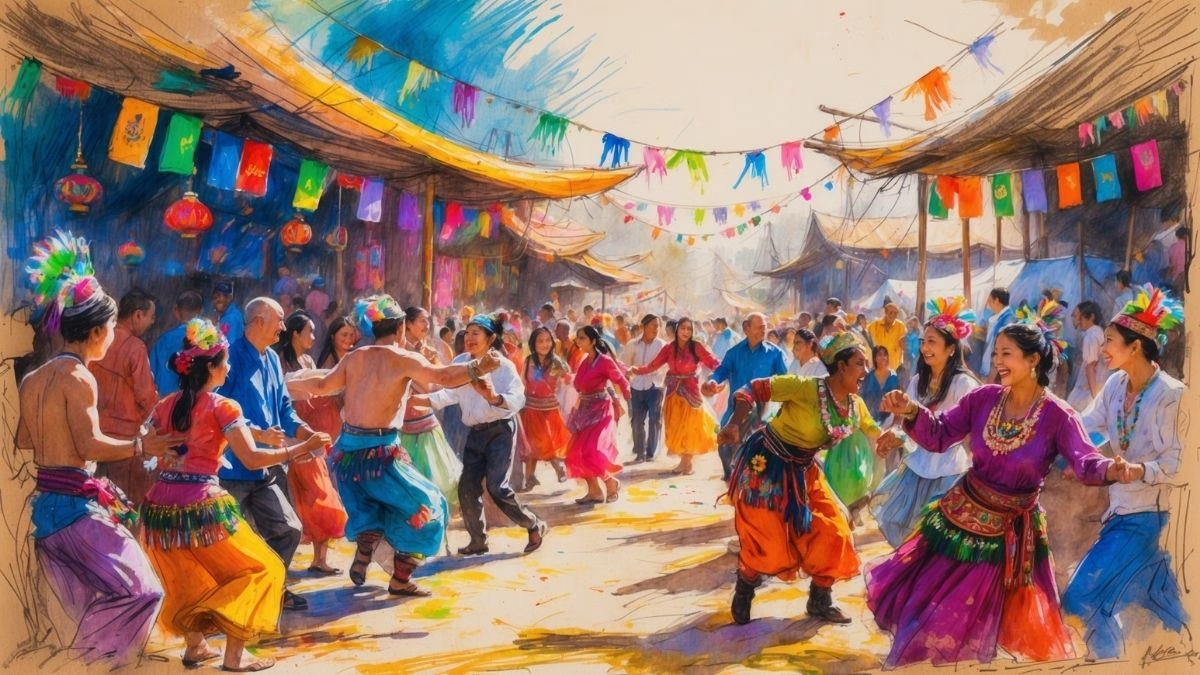Analyzing Community and Culture: The Impact of Festivals
Ready for another reading challenge? This passage delves into a common topic in sociology and cultural studies: the role of festivals in society. Texts like this, which analyze a phenomenon from multiple angles, are frequent on international exams. You’ll need to track main ideas, identify cause-and-effect relationships, and understand the author’s perspective.
Effective Reading Techniques:
- Look for Structure Words: Pay attention to words that signal relationships between ideas. For example, “on one hand… on the other hand” signals a contrast. “Consequently” or “thus” indicates a result. These words are your roadmap.
- Identify Functions of Paragraphs: Each paragraph has a job. Is it introducing the topic? Providing a positive example? Discussing a negative consequence? Labeling the function of each paragraph in your mind will improve your comprehension.
- Pinpoint the Author’s Overall Stance: Does the author think festivals are purely good, purely bad, or a mixed bag? Look for a concluding sentence in the introduction or conclusion that summarizes their overall position.
Time Management:
Aim to complete the reading and the 10-question quiz in 18-20 minutes. Sticking to a time limit is excellent practice for the real exam environment. Good luck!
The Double-Edged Sword: Cultural Festivals and Community Impact
Cultural festivals, from local harvest celebrations to massive international art fairs, are often heralded as powerful engines for social cohesion and economic growth. At their best, these ephemeral gatherings serve as vital platforms for the perpetuation of intangible cultural heritage—the songs, rituals, and traditions that define a community. They foster a sense of shared identity and belonging among residents, reinforcing social bonds through collective participation. Economically, the appeal is just as potent. A successful festival can attract significant tourism, injecting capital into local businesses, creating temporary employment, and enhancing the visibility of a region on a national or even global stage. The reciprocity is clear: the community sustains the festival, and in turn, the festival sustains the community.
However, a closer analysis reveals a more complex dynamic. The very success that communities seek can paradoxically lead to the erosion of the festival’s authentic cultural core. As festivals grow in popularity, they often become subject to commercialization. The drive for profit can lead to the “packaging” of cultural experiences for tourist consumption, which may dilute or distort original meanings. This process, often referred to as commodification, can transform a genuine expression of community identity into a staged performance, leaving local participants feeling alienated from their own traditions. The focus can shift from communal celebration to economic transaction, creating a tension between authenticity and profitability.
Furthermore, the impact on the host community is not always positive. The influx of large crowds can place immense strain on local infrastructure, including transportation, sanitation, and housing. This can lead to environmental degradation, with increased waste and energy consumption. A “tourist gaze” can also disrupt the daily lives of residents, creating a sense of invasion rather than welcome reciprocity. In some cases, this has led to social friction, where the economic benefits are perceived as flowing only to a small group of business owners, while the broader community shoulders the social and environmental costs. This disparity can undermine the very social cohesion the festival was intended to promote.
Ultimately, the long-term success of a cultural festival depends on a delicate balancing act. For these events to remain sustainable and beneficial, organizers and communities must navigate the fine line between growth and preservation. This involves implementing strategies that prioritize local involvement, manage tourist flows effectively, and ensure that economic benefits are distributed equitably. It requires a conscious effort to safeguard the intangible heritage at the festival’s heart, ensuring it remains a source of pride and connection for the community rather than merely a product for sale. Without such careful stewardship, a festival risks becoming a victim of its own success, its cultural soul traded for fleeting economic gain.
Reading Comprehension Quiz
Key Vocabulary & Phrases
- Cohesion: This refers to the action or fact of forming a united whole. We used it to describe how festivals can build “social cohesion,” meaning they help bring the people of a community together.
- Perpetuation: This is the continuation or preservation of a situation, idea, or activity. Festivals are important for the “perpetuation” of traditions, meaning they help keep those traditions alive for future generations.
- Reciprocity: This is the practice of exchanging things with others for mutual benefit. We talked about the “reciprocity” between a festival and its community—they each support and benefit the other.
- Paradoxically: This adverb describes a situation that seems absurd or self-contradictory but is nevertheless true. It’s “paradoxical” that a festival’s success can lead to its cultural decline.
- Erosion: This means the gradual destruction or wearing away of something. We used it to describe the “erosion of the festival’s authentic cultural core,” meaning its authenticity was slowly being worn away.
- Commodification / Commodify: This is the process of treating something (like a cultural tradition) as a mere commodity—a product that can be bought and sold.
- Alienated: This means feeling isolated or estranged from a group or an activity to which one should belong. When festivals become too commercial, locals can feel “alienated” from their own culture.
- Infrastructure: This refers to the basic physical and organizational structures and facilities (e.g., buildings, roads, power supplies) needed for the operation of a society. A large festival can put a strain on local “infrastructure.”
- Disparity: A great difference. The passage mentions the “disparity” between who gets the economic benefits and who bears the social costs.
- Equitably: This means in a way that is fair and impartial. The author suggests that for a festival to be successful, its economic benefits must be distributed “equitably” throughout the community.










0 Comments